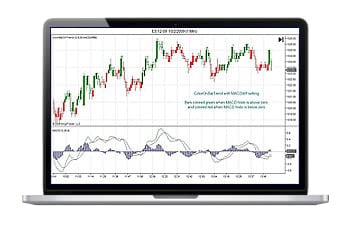Getting Started Trading Futures in 4 steps
Step 1: Educate
“Don’t jump in the water until you know how to swim.” — Take the time to acquire a comprehensive introduction to the markets.
What you’re looking for is a futures booklet or course that explains things like order entry, margin requirements, contract specifications and price ticks, and basic fundamental and technical analysis. These are just a few of the basic, yet extremely ‘key’, ingredients to becoming a successful futures trader. Please be advised that education is not a guarantee to success.
Of course the more books you read, the more you stand to learn, and from different perspectives too. Just be careful not to overwhelm yourself with too many trading philosophies -you don’t want to get to the point where you’re trying to trade different “systems” that are contradicting each other and confusing you.
Read, listen, learn so that you form a personal opinion and plan based on what makes sense to you.
Step 2: Get Info
There are excellent trading newsletters, hotlines and updates available today.
What you’re looking for in a newsletter or a hotline is a market update. There are two main schools of thought that you’ll use to forecast futures prices -technical and fundamental analysis. Ideally, you want to gain access to some type of newsletter or hotline that keeps you updated with the type of analysis you want to follow. To be thorough in today’s fast-moving market place, you’ll want a source that’s updated at least once or twice a week.
Step 3: Paper Trade
Here’s the best part of being a papertrader… You get to test any strategy or trading plan you want, and it doesn’t cost you a dime if you lose!
Paper trading is the process of tracking future market trades on paper and keeping track of the profit and losses that occur. It’s the perfect way for a new trader to become familiar with how to enter an order, how to follow the market, and if a trading strategy is successful or now.
Most brokerage firms will have some sort of papertrading program. They will likely pair you with a broker or broker assistant who will help you keep track of your hypothetical positions and answer your questions.
Get You Free Simulated Paper Demo >>
Step 4: Open an account
You’ve educated yourself, you’ve found a newsletter that keeps you updated and gives you recommendations, and finally you’ve traded on paper. Well, it looks like you may be ready to open an account and trade for real!
Full-service versus discount? Discount versus online trading? It’s up to you and what you feel comfortable with, but we will always recommend that your first trading experience be with a broker.
A good broker will help you with order entry, keep you up-to-date with reports and last trading days, etc. It doesn’t do you any good to save thousands of dollars in commissions if you just lose it in the market anyway.
Ask what type of services firms offer, and be sure to speak directly with the broker or the people that you will be working directly with -THIS IS IMPORTANT; if the broker doesn’t have time to introduce himself to you and answer some simple questions, he’s unlikely to have time to spend with you after you open an account!


